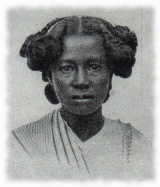Difference between revisions of "Sakalava"
| Line 1: | Line 1: | ||
[[File:Sakalava_woman.jpg|thumb|160px|Sakalava woman]] | [[File:Sakalava_woman.jpg|thumb|160px|Sakalava woman]] | ||
| − | Sakalava - ''People of the long valleys'' - is a coastal tribe of approximately 700,000 people, living in the western Madagascar between [[Mahajanga]] and [[Toliara]]. | + | Sakalava - ''People of the long valleys'' - is a coastal tribe of approximately 700,000 people, living in the western Madagascar between [[Nosy-Be]], [[Mahajanga]] and [[Toliara]]. Although only over 6% of Madagascar's population are Sakalava, their territories are still the largest of all ethnic groups. Thee Sakalava once comprised an ancient empire, ruled by their own kings and queens. They are moreso a diverse ethnic group, than an ethnic group in its own right. Their dark skin, Polynesian appearance and short curly hair, as well as the Sakalava dialect distinguishes the Sakalava people from other ethnic groups in Madagascar. |
| − | The Sakalava are cattle raisers. Prosperity is meassured on the number of cattle owned. Compared to women of other tribes, the Sakalava women have a higher social status in the community.<br clear="all"> | + | The Sakalava are cattle raisers. Prosperity is meassured on the number of cattle owned. It is quite common, that the Sakalava living in the hinterland keep large herds of zebu cattle that outnumber the human population. Compared to women of other tribes, the Sakalava women have a higher social status in the community.<br clear="all"> |
== Additional information == | == Additional information == | ||
* http://en.wikipedia.org/wiki/Sakalava | * http://en.wikipedia.org/wiki/Sakalava | ||
Revision as of 15:14, 31 December 2009
Sakalava - People of the long valleys - is a coastal tribe of approximately 700,000 people, living in the western Madagascar between Nosy-Be, Mahajanga and Toliara. Although only over 6% of Madagascar's population are Sakalava, their territories are still the largest of all ethnic groups. Thee Sakalava once comprised an ancient empire, ruled by their own kings and queens. They are moreso a diverse ethnic group, than an ethnic group in its own right. Their dark skin, Polynesian appearance and short curly hair, as well as the Sakalava dialect distinguishes the Sakalava people from other ethnic groups in Madagascar.
The Sakalava are cattle raisers. Prosperity is meassured on the number of cattle owned. It is quite common, that the Sakalava living in the hinterland keep large herds of zebu cattle that outnumber the human population. Compared to women of other tribes, the Sakalava women have a higher social status in the community.
